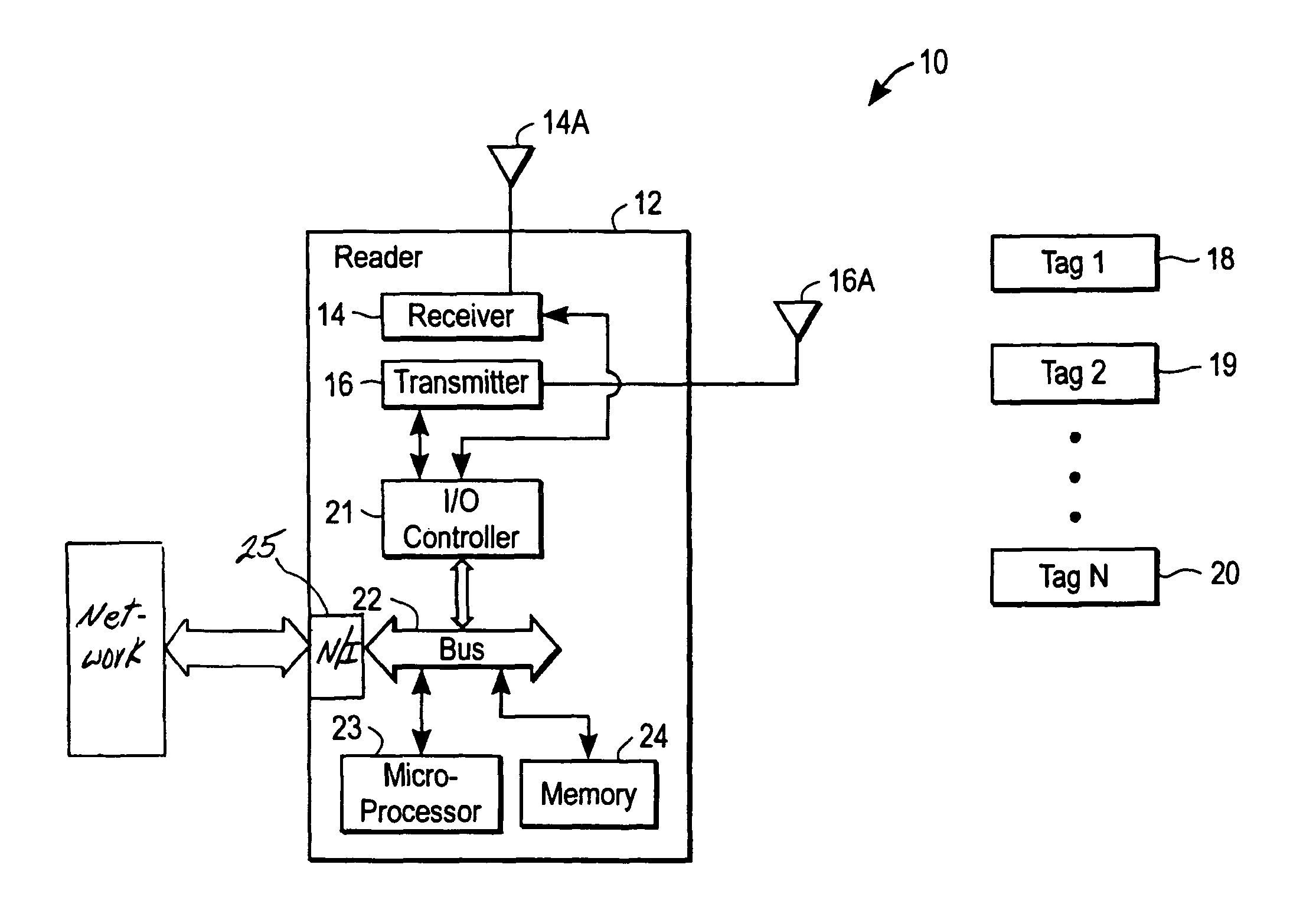Methods and apparatuses to identify devices
a technology of identification device and identification method, applied in the direction of instruments, burglar alarm mechanical actuation, electromagnetic radiation sensing, etc., can solve the problems of inability to guarantee the favorable multipath, the frequency is right, and the manufacture of a tag with a tightly controlled persistence time is difficult, so as to achieve less state dependence
- Summary
- Abstract
- Description
- Claims
- Application Information
AI Technical Summary
Benefits of technology
Problems solved by technology
Method used
Image
Examples
Embodiment Construction
[0006]The present invention uses in one exemplary embodiment a protocol with two symmetric inventoried states, and provides advantages over a ready-quiet protocol. The symmetric version effectively has less state dependence by symmetrizing the quiet-ready states into two symmetrical halves, the State A and State B of the protocol.
[0007]The symmetry described herein will substantially increase the performance over ready-quiet protocols in cases where tags have been inventoried and put into the quiet state, and it is desired to inventory them again, either from a different reader station, or as part of a continuous inventory to monitor tags being removed, on a timely basis.
[0008]One implementation of the tag is to supply a persistent node that maintains its state for at least twenty seconds even in the absence of power. Assuming that the persistent node decays to the zero (0) state, [0] would encode State A, and [1] will encode State B. State B expires with time into the State A. Ther...
PUM
 Login to View More
Login to View More Abstract
Description
Claims
Application Information
 Login to View More
Login to View More - R&D
- Intellectual Property
- Life Sciences
- Materials
- Tech Scout
- Unparalleled Data Quality
- Higher Quality Content
- 60% Fewer Hallucinations
Browse by: Latest US Patents, China's latest patents, Technical Efficacy Thesaurus, Application Domain, Technology Topic, Popular Technical Reports.
© 2025 PatSnap. All rights reserved.Legal|Privacy policy|Modern Slavery Act Transparency Statement|Sitemap|About US| Contact US: help@patsnap.com



